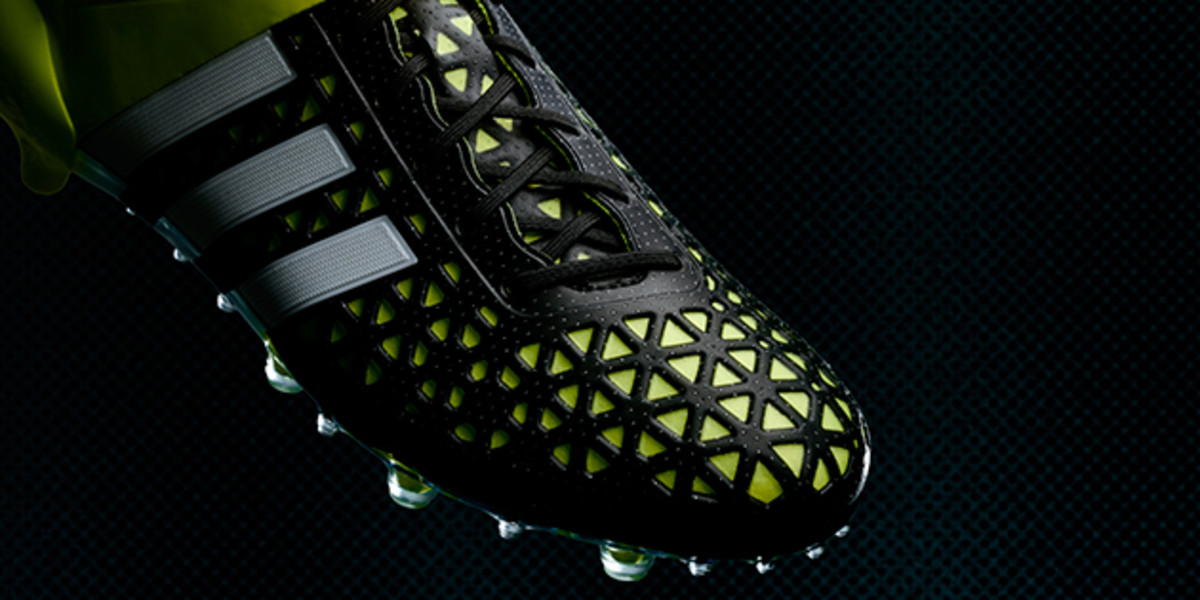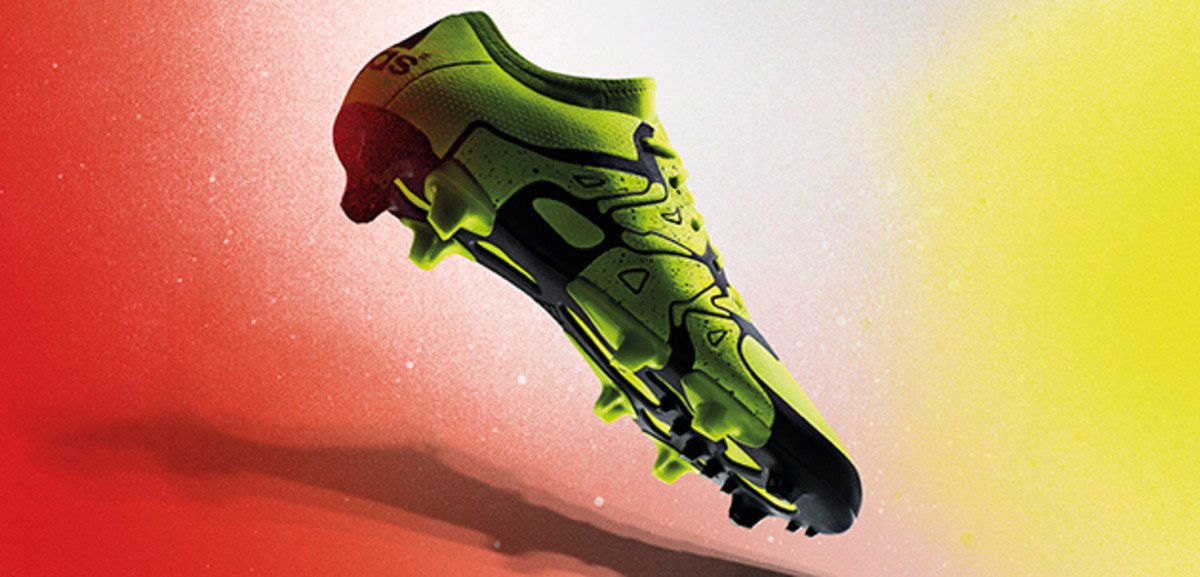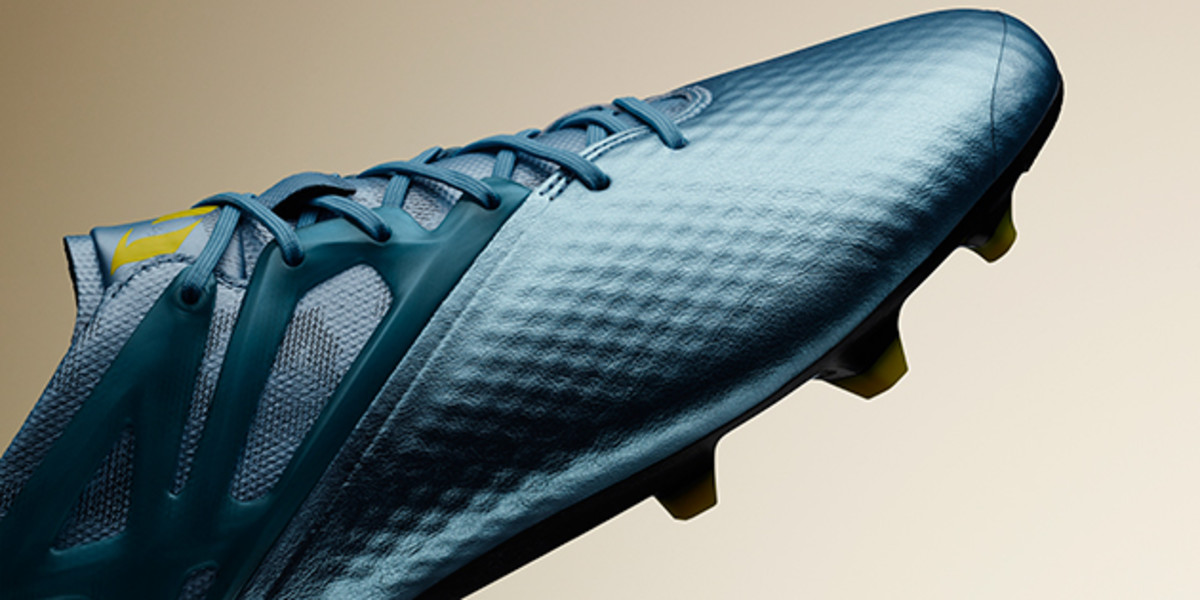Adidas' soccer overhaul includes signature boot for Lionel Messi, more

They're all gone. Every one of the four cleats that made Adidas soccer what it was have been discontinued. Predator? No more.11Pro, Nitrocharged? Erased.F50? Goodbye.
Timed ahead of the Champions League Final in Berlin and the Women’s World Cup in Canada, Adidas unveiled three new soccer cleats. And not just updates of the old versions with new names, but completely overhauled soccer lines.
“With no risk, there is no fun,” Aubrey Dolan, category director of Adidas footwear, tells SI.com.
Adidas created a storyline around chaos and control—and FC Barcelona superstar Lionel Messi. The two new mainline boots are now simply known as the Ace, for control players, and X, for chaos-creating styles. And Messi now has his first signature boot, the Messi 15, designed from the ground up—and technically the first true signature cleat in soccer.
Nike drops Calvin Johnson signature cleats along with new "silo" system
“It’s chaos or control. There are players who think more about what the team needs and what is the best solution for the team,” says Bayern Munich coach Pep Guardiola. “This kind of player is an intelligent player who has a vision about what the team needs. He controls. Then there are the ones who cause chaos. The ones who play on instinct and on talent. They are a little outside of the field. They can create absolutely everything and you can’t control that. You cannot limit that.”
Adidas also did something a tad different for the traditional-minded German brand: they embraced neon yellow. Both the Ace and X offer initial colorways of bright yellow and black. “We needed and wanted to make a statement,” Dolan says about the launch. “The color blocking is strong. It is a first for us.”
The embracing of the color flows with what the players ask for, Marco Müller, senior product manager, tells SI.com. “They want to express themselves,” he says, “and a special player wants to stand out on the pitch. Solar yellow is what the players wanted.”
We saw the introduction of the line for the first time, when new Adidas boots scored the first three goals in Berlin. And we’ll see plenty more over the course of June, as five U.S. Women’s National Team players will wear either the X or Ace.
Ace 15
Technically, how do you create control? Dolan says they devised a new three-layer hybrid material on the forefoot with a “key focus to increate control.” The material combines grippy memory foam, PU material and a grip-happy textile to allow the ball to rest on the foot longer. For shorter touching, such as during dribbling, Dolan engineered in an open web of this new material overlay. More webbing was added for areas of the foot that required longer touching on the ball, a type of “smart material” engineering that puts “magic in the forefoot.”

Dolan says the control wraps the foot 360 degrees for the first time for control that lasts through the outsole.
With control comes comfort. On the back of the shoe, a heel counter protects and stabilizes, an area of the shoe design specifically for functionality. The new stud configuration—also the first boot with studs designed for multiple surfaces—puts more of the rounded studs on the ball during foot-over manuevers and a wider last help create comfort during control.
X 15
When chaos comes on the foot of a player on your team, you’re all for it. “An X player shatters expectations,” Müller says. “You can’t predict what he does on the pitch.”
The new X, which is similar to the Ace, started as a thought roughly three years ago and was something completely new for Adidas. “Even from the start it was a new silhouette, different shapes, different geometries,” Müller says. “The key points were fast and agile.”

To get there, Müller says they went lightweight and stable. The X weighs in at 205 grams with the new X Skin a textured material designed to work in both wet and dry conditions. But the skin isn’t stable on its own. Over multiple iterations, the reinforcing PTU film took on different shapes and placements. In the end, after testing with professional players, the chaotic design mimics where reinforcement is needed most, with less material than Adidas designers originally envisioned, even if they did extend it in the forefoot.
- MORE EDGE: USWNT adds protective headgear for World Cup
The X Claw cleat plate helps cut down on weight. Instead of using a full plate, Adidas cut away, making it like an agile skeleton. “This has high torsion,” Müller says, “the ultimate in agility.”
While early designs had the X with a high collar, the first release doesn’t go high-top, instead using a compression fit around the ankle. The X does offer a different design element for the company, using their “performance logo,” instead of the traditional three stripes, something planned even from the concept stage.
Messi 15
The world’s best? The debate will always rage on about Messi, but this is certain: he has a true signature cleat, a first in today’s market.
“How do you create a shoe for the best player in the world?” asks senior design director Dave Surace.
Adidas teamed with the Argentine, who captured a Champions League title with Barcelona wearing the light blue Messi 15, to work on the design process every step along the way.

Early on, even with the variety of directions the cleat design could go, Surace says Messi wanted a soft “fit cage,” just enough to hold the foot and heel pocket. Early on the fit cage went from toe to heel, but that didn’t work, resulting in too restrictive a feel. Using lessons learned in a biomechanics lab, computer analytics and trial and error, Adidas cut the cage just to the rear of the shoe to tighten the fit there.
That left the forefoot open for Messi. Long known for wearing leather, the creative player wanted a soft forefoot. Adidas dialed up “Messi Skin,” a synthetic material engineered with a waffling pattern, a soft-to-the-touch material that doesn’t have the same plastic feel of other synthetics.
On the outsole, in order to up Messi’s ability for rapid lateral agility, Adidas cored out the plate to maximize torsion. Whereas the Ace uses multi-directional rounded studs for control and the X uses blades studs for quick movement—the Messi 15 uses both. The 11-stud configuration includes four round and seven bladed with an O-pattern for the bladed cleats. His plate fits on the same last as the X because “he likes it,” Surace says.
Aesthetically, Adidas opted to launch the shoe in blue—more colors will come—to create a “different color story” and tie in to the obvious Argentina-related story.
Adidas has introduced a completely new lexicon for its world of soccer cleats. But it will remain up to the technology to prove if it comes with control or chaos.
Tim Newcomb covers stadiums, design and gear for Sports Illustrated. Follow him on Twitter at @tdnewcomb.
